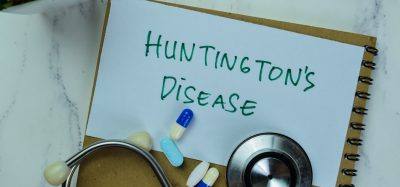Women in Stem with Dr Amber D. Van Laar
Posted: 29 February 2024 | Dr Amber Van Laar (AskBio), Taylor Mixides (Drug Target Review) | No comments yet
Dr Amber Van Laar shares her remarkable journey in STEM. From a childhood fascination with science and medicine to a pivotal role as VP Clinical Development, AskBio. In this interview, she explores the profound impact of her early exposure to neuro-oncology, the challenges faced as a physician-scientist, and the pursuit of innovative gene therapies. Dr Van Laar reflects on the power of mentorship, the significance of diverse perspectives in STEM, and the projects that have reshaped the understanding of neurodegenerative diseases.

Can you tell us about your journey in the field of STEM and the challenges you encountered along the way?
From a very young age, I was drawn to science and medicine. My interest in the field of STEM sharpened when, in my early teens, I had the chance to work in a neuro-oncology lab. This early exposure to bench science had a long-lasting impact. It propelled me to continue lab work during my undergraduate training, my medical training, and to an academic appointment in the Movement Disorders Division, Department of Neurology, at the University of Pittsburgh.
Trust yourself. Welcome all feedback, but do not let the naysayers keep you from accomplishing your goals. Stick with your passions, this will always carry you far.
During my academic career, I had the opportunity to examine the underlying causes of neurodegenerative diseases like Parkinson’s disease and develop novel animal models to investigate potential disease-modifying therapeutics. Through further research and work as a principal investigator on clinical studies for several central nervous system indications, I laid the groundwork for a career in gene therapy drug development. In my current role at Asklepios BioPharmaceutical, Inc. (AskBio) I continue to work to bring innovative gene therapies to patients in need.
The rigors of training as a physician-scientist present their share of obstacles to overcome. Deep dedication is required to advance patient care, conduct clinical studies, and pursue bench-based research. As a growing field, gene therapy also presents its challenges and I have made personal sacrifices along the way. Nevertheless, the potential to pioneer and move the needle for patients with few treatment options drives me to push through.
What inspired you to pursue a career in STEM, and how did you overcome any obstacles or biases you may have faced?
My innate interest in innovative medicine forever changed when I witnessed a childhood friend lose their life to brain cancer. It was a devastating first introduction to brain disease, but her battle sparked a life-long interest in neuroscience that shaped my pursuit of clinical neurology. As a teen, my first experience in the lab came through a research program at Barrows Neurologic Institute. I felt drawn to the thrill of discovery and working in uncharted territory, which still motivates me today.
This early exposure to the bench and the great mentors I found along the way have propelled me on my path and guided me through critical challenges that have arisen in my career. I have had the fortune of strong mentorship from women in STEM. Through their own experiences, my mentors have helped me navigate what can be a trying course for women in science. It can be difficult for women to be heard in these environments, where they are often still the only female voice in the room. Their support and guidance continue to sustain me on my journey.
Could you share an example of a specific project or research that you have worked on and the impact it has had in your field?
Our reliance on animal models complicates the field of neurodegenerative research, as they do not faithfully recapitulate human disease. As a result, many seemingly promising pre-clinical candidates do not survive the chasm between the bench and bedside. For instance, we know ageing is a primary risk factor for many neurodegenerative diseases. Yet it is rarely accounted for in animal models of Alzheimer’s, Parkinson’s, and similar disorders. Part of my academic work strove to address this. We sought to account for the effect of time in the development of a novel parkinsonian animal model. In a similar manner to some human patients diagnosed with Parkinson’s disease, we exposed animals briefly to a mitochondrial toxicant, the pesticide known as rotenone.
We then waited to examine neuropathologic and behavioural changes over time. Interestingly, we observed early histological changes that preceded the onset of parkinsonian symptoms, like the brain changes we expect to see in patients before they are diagnosed with Parkinson’s disease. Additional analyses provided insight into the neuroimmunologic basis of indolent neurodegenerative disease. Our findings sparked many further research questions for our field. They also gave us the means to test a variety of therapeutics before the manifestation of behavioural changes, but critically, after the neurodegenerative process is well underway.
In my clinical career, I have had the privilege to work on multiple gene therapy studies for central nervous system indications. This is at a time when very few similar therapies are available in clinical studies, let alone approved for clinical use. Gene therapy research brings us closer to a potential one-time intervention for previously untreatable brain diseases. This hope for patients in need is a powerful motivation for me.
How has your research in STEM contributed to advancements or improvements in your field, and what potential future applications or implications do you foresee based on your work?
The ability to validate a variety of neuroprotective and neurorestorative therapeutic candidates at clinically relevant timepoints is significant for our field. It marks a considerable advancement in our understanding of the animal model of neurodegenerative disease. With this novel parkinsonian model, investigators will be able to apply a candidate drug at a timepoint best suited for a particular mechanism of action, or an effect on the neurodegenerative cascade. This could bring more viable candidates to the clinic, leading to improved therapies for patients in need. Our ultimate hope is for a disease-modifying therapy for Parkinson’s disease. With the ability to select drug candidates dependent on timing and underlying pathophysiology also comes the potential to refine the disease populations under study and change the design of future clinical studies.
Diversity should be a priority along the training journeys of all graduate students, young investigators, medical students, residents, and fellows.
Disease modification in biologic therapy for Alzheimer’s disease has also shown recent success. This has highlighted the need for more and more effective drug candidates as we seek to demonstrate a similar modifying effect in other neurodegenerative disorders. Additional efforts to diagnose these indolent neurodegenerative diseases earlier, through the identification of biologic markers, stand to potentially shift the focus of drug development toward earlier mechanisms in the neurodegenerative cascade.
As a woman in STEM, what unique perspectives or strengths do you believe you bring to your work?
Diverse viewpoints enrich any decision-making process, offering unique perspectives or identifying opportunities that may otherwise go unnoticed. Women, especially those of us who have overcome adversity in our personal lives and career development, are made for this. We can readily work around challenges and provide creative solutions to problems that others may not recognise. Healthy debate and discussion are integral to the scientific process. Women’s voices are a necessary input to the conversation.
Diversity should be a priority along the training journeys of all graduate students, young investigators, medical students, residents, and fellows. As these trainees progress in their careers, they hold the keys to ensuring the continued inclusion of women and minority groups, which brings us closer to parity in STEM.
What advice would you give to young women who are considering a career in STEM but may be hesitant due to societal stereotypes or perceived challenges?
Nothing will change if you are not there! There may be obstacles along the way, but very little is insurmountable with determination and a desire to see and execute change. The journey will be easier with others beside you. Always be on the lookout for allies and mentors. Surround yourself with mentors who can not only enrich the many facets of your career but your personal and social life as well. Keep in mind that you should seek diversity in your mentors too. This includes reaching out to both men and women for balanced guidance.
It is always encouraging to witness the successes of women who have paved the science and biotech path before me. More and more women in STEM reach leadership levels and are part of strategic decision making within their organisations. Women in these roles are tangible examples for others to follow in their footsteps.
Trust yourself. Welcome all feedback, but do not let the naysayers keep you from accomplishing your goals. Stick with your passions, this will always carry you far.
How do you see the representation of women in STEM changing over the years, and what further progress do you believe is needed?
In the generation ahead of me, few women at all were represented in senior or C-Suite positions. A growing number of women are now filling these positions and will influence decision making to improve diverse representation in STEM. There is still more work to be done to address this skew.
During my training, I saw US medical school admissions reach parity. In many STEM graduate programs today, even more women are matriculating, earning doctoral degrees, and advancing into academia. That gives me hope for greater representation of women in our field. Still, the attrition rate of women who rise to academic tenured or C-Suite positions remains dismally low. We need to see intentional effort toward the retention and development of women into senior positions if we want to build the legacy of women in STEM.
In your opinion, what can organisations and institutions do to create a more inclusive and supportive environment for women pursuing STEM careers?
Organisations must continue to normalise the presence of women and other underrepresented people in any position where decisions are made. Female representation at a senior level is paramount to making this a reality. Still, we also need to see strong ally ship among our male colleagues to make this organisational change possible. Diversity and fair representation don’t only benefit women, they lead to improvements and opportunities for all employees in STEM.
Looking ahead, what exciting developments or advancements do you foresee in your field of STEM, and how do you envision your own research contributing to those future innovations?
We are in a moment of tremendous progress in the world of cell and gene therapy. As the technology matures, the field will continue to see an increasing number of therapeutic approvals. Advancements in gene and cell-based medicine have the potential to meaningfully address diseases where there are no available treatments. The impact on patients and their families could be life-changing. I believe that breakthrough discoveries will continue to advance the development of these therapies and transform outcomes for patients and their loved ones.
About the author
 Dr Amber Van Laar
Dr Amber Van Laar
VP Clinical Development, AskBio
In her clinical practice, Dr Amber Van Laar cared for patients living with a variety of movement disorders and neurodegenerative diseases. She has also contributed to the Parkinson’s disease community through volunteer work with local PD support groups and serves on the Board of Directors for the Parkinson’s Foundation of Western Pennsylvania to keep the patient front of mind.
Dr Van Laar has been researching neuroprotective approaches for Parkinson’s disease since 2002, with her research efforts focused on mechanisms of neurodegenerative diseases and the therapeutic potential of gene therapy. Dr Van Laar has also been an investigator in clinical trials for neurodegenerative diseases, including multiple gene therapy studies for Parkinson’s disease.
Harnessing the non-clinical and clinical experience with gene therapy, she played a pivotal role in the development of gene therapy programs for Parkinson’s and Multiple System Atrophy, a similar CNS disorder. Dr Van Laar now serves as the VP of Clinical Development for CNS Gene Therapy at Asklepios BioPharmacetuical Inc. (AskBio). She brings a unique blend of preclinical, clinical, and clinical-trial development experience to the advancement of gene therapy as a new platform to treat a previously untreatable brain diseases, but also potentially altering the course of the diseases in hopes of bettering the lives of patients.
Dr Van Laar obtained her MD from the University of Pittsburgh School of Medicine and completed a clinical-research fellowship in Movement Disorders at the University of Pittsburgh Medical Center. Upon completion of training, she accepted a faculty position in the Department of Neurology at the University of Pittsburgh School of Medicine in the Movement Disorders division and the Pittsburgh Institute for Neurodegenerative Diseases. She currently serves an adjunct role at the University of Pittsburgh.
Related topics
Cell Therapy, DNA, Drug Delivery, Drug Development, Gene Testing, Gene Therapy, Neurons, Neurosciences, Targets
Related organisations
AskBio, Asklepios BioPharmacetuical Inc
Related people
Dr Amber Van Laar (Asklepios BioPharmacetuical Inc)







